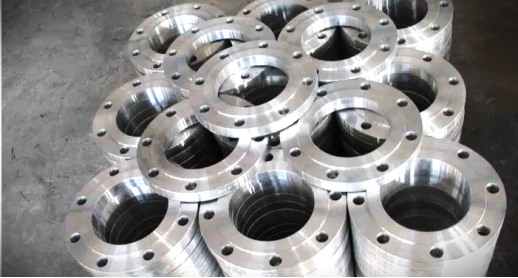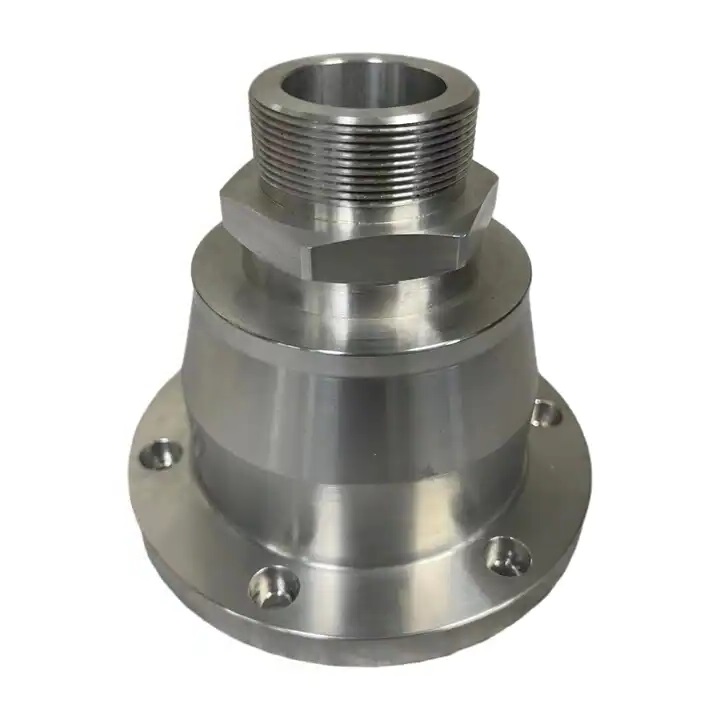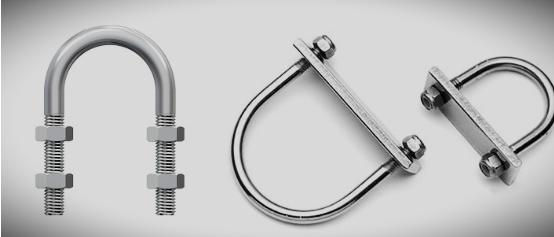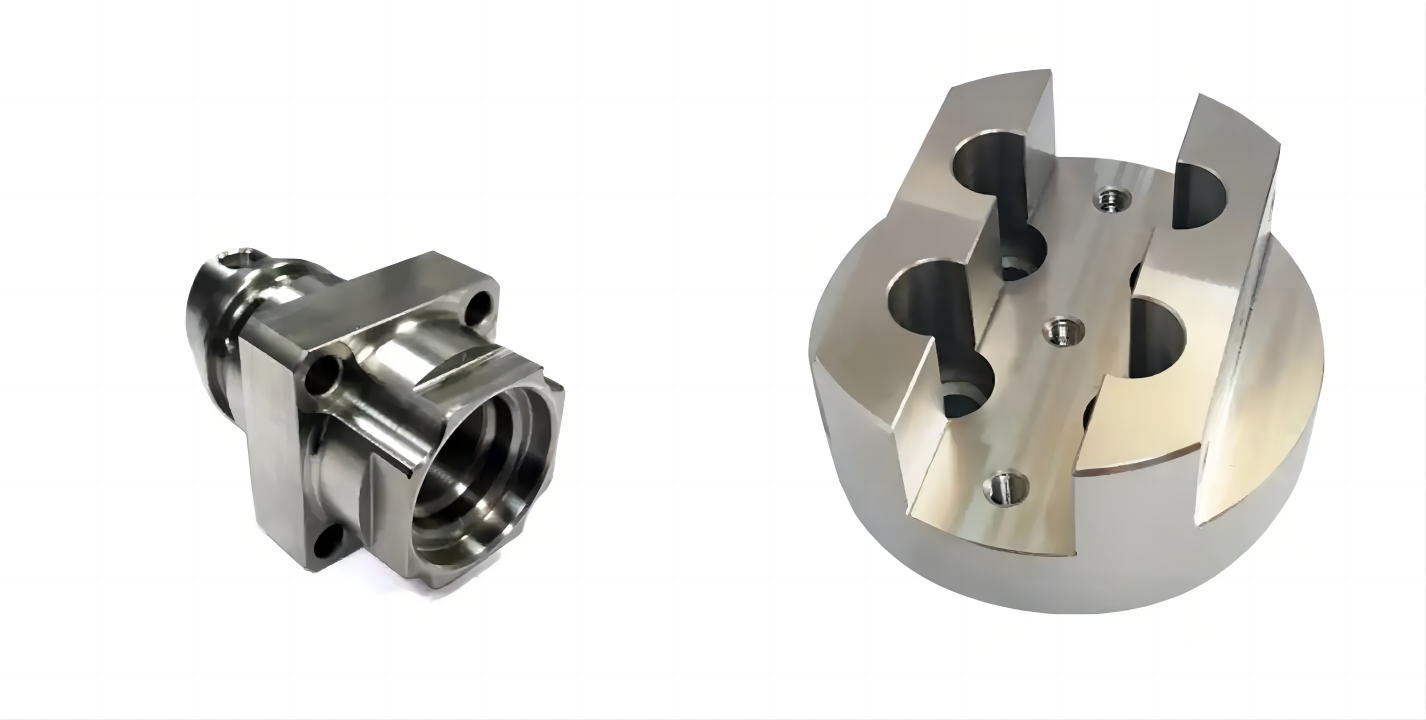The Advantages of 316 Stainless Steel Machining for Your Business
 Dec 01,2023
Dec 01,2023

Since stainless steel is a widely used material all over the world for a number of applications. Almost all types of stainless steel whether it’s ferritic, austenitic, or martensitic is available but there are different applications of each on the basis of their respective properties. It might be difficult for one to choose which stainless steel would be better option for their application since there are several grades under each type. Among them, AISI 316 is a commonly used material due to its balanced set of properties. Through this article, you’ll learn about the properties, applications, advantages, and disadvantages of SS316 and will help you to discover material that might be the best option for you.

SS316 Flange
What is AISI 316 Stainless Steel?
AISI 316 stainless steel is an austenitic stainless steel, often known as SS316. It contains molybdenum, which provides exceptional heat and corrosion resistance, making it suitable for use in tough conditions, particularly marine environments. Furthermore, SS316 exhibits high tensile strength and great creep resistance, making it an excellent choice for a variety of industries such as marine, pharmaceutical, and food processing. However, its machining is difficult as it often leads to tool breakage and requires special tool and low tool speed.
Following table shows the chemical composition of SS316:
|
Elements |
Content |
|
Carbon |
Upto 0.08 % |
|
Molybdenum |
2.0- 3.0 % |
|
Manganese |
Upto 2.0 % |
|
Silicon |
0.25- 0.75 % |
|
Phosphorous |
Upto 0.05 % |
|
Chromium |
Around 18.5 % |
|
Nickel |
9.0- 14 % |
How Difficult is 316 Stainless Steel Machinability?
Machining 316 stainless steel might be difficult because of:
High work hardening rate: A material's work hardening rate relates to its tendency to get harder and more difficult to cut when it is deformed during machining. This work hardening can result in greater cutting forces in the case of 316 stainless steel machinability.
Moderate thermal conductivity: Heat accumulates at the cutting tool's interface with the workpiece during machining operations. If heat is not efficiently dissipated it could result in increased tool wear, lower tool life, and potential workpiece damage.
Try Tuofa Now!
Send drawings to info@tuofa-cncmachining.com
Tuofa Engineer Support Team
Real human quotes are more accurate than software quotes
What is the Hardness of 316 Stainless Steel?
When machining 316 stainless steel, the hardness is an important factor to consider. Following table gives the hardness values of SS316:
|
Type |
Value |
|
Brinell Hardness |
216 |
|
Rockwell Hardness |
95 |
|
Vickers Hardness |
155 |
|
Knoop Hardness |
166 |
Note: Values of Rockwell, Vickers and Knoop hardness are converted from Brinell hardness value.
However, it is important to remember that conditions such as cold working, heat treatment, and the presence of additional alloying elements can all affect hardness.
Type 316 Stainless Steel Machining Services
316 Stainless Steel Machinability Chart
Machinability of AISI 316 is typically complicated but, it can be somehow improved by annealing. Turning 316 stainless steel involves low cutting speed when doing finishing operation for better surface finish. Machinability charts are useful for determining the best cutting conditions for a specific material. Recommended cutting speed for certain operations on SS316 are shown below:
|
Operations |
Values |
|
Machinability |
35-40 % |
|
Machinability (when annealed) |
Upto 45% |
|
Turning |
450-600 SFM |120-160 m/min |
|
Milling |
300-400 SFM | 90-130 m/min |

Turning 316 stainless steel
The following video shows turning 316 stainless steels involving the cutting speed and feed rate,
Milling 316 Stainless Steel Speeds and Feeds
Selecting the appropriate speeds and feeds for milling 316 stainless steel is crucial for efficient machining while maintaining tool life and achieving the desired surface finish. Here are some general guidelines:
-
Cutting Speed
The cutting speed for 316 stainless steel typically ranges between 60 and 90 feet per minute (18-27 meters per minute). This range can vary based on the type of milling operation (e.g., roughing, finishing), tool material, and tool geometry.
-
Spindle Speed (RPM)
The spindle speed in revolutions per minute (RPM) can be calculated using the formula: RPM= (Cutting Speed * 4) / (Tool Diameter)
For example, with a cutting speed of 75 feet per minute and a tool diameter of 0.5 inches, the RPM would be approximately 1800.
- Feed Rate
The feed rate depends on factors like the depth of cut, width of cut, and the tool's geometry.
A general starting point for feed rate in milling 316 stainless steel could be around 0.001 inches per tooth. This value needs to be adjusted based on tool manufacturer recommendations and specific machining conditions.
- Depth of Cut and Width of Cut
Lighter cuts are preferable, especially for finishing operations. A typical depth of cut might be in the range of 0.05 inches to 0.1 inches.
The width of cut should not exceed 30-40% of the cutter diameter.
- Tool Material and Geometry
Tools with coatings such as TiAlN or AlTiN can provide additional heat resistance and increase tool life.
- Coolant Use
The use of a coolant is highly recommended to reduce tool wear and prevent work hardening of the stainless steel.
Coolants also help in chip removal and can improve surface finish.
- Machine Rigidity and Stability
Ensure that the milling machine is rigid and stable. Vibration and chatter can severely impact tool life and surface finish.
Remember, these are general guidelines. It's important to refer to the tool manufacturer's recommendations and start with conservative speeds and feeds, gradually adjusting based on the specific conditions of your machining setup and the desired outcomes. Testing in your specific machining environment is the best way to determine optimal settings.
What is Stainless Steel 316 Used For?
Because of its outstanding corrosion resistance, high tensile strength, and adaptability, 316 stainless steel is widely utilized in a variety of industries. 316 stainless steel is commonly used in the following applications:
Marine equipment: 316 stainless steel is often used in marine conditions such as boat fittings, propellers, and offshore oil rigs, because of its resistance to corrosion in seawater.

AISI 316 U Bolts
Pharmaceutical supplies: Due to its good resistance to corrosion and chloride ions, 316 stainless steel is ideal for pharmaceutical equipment including storage vessels and tubes where cleanliness and hygiene are critical.
Food processing equipment: Stainless steel 316 is also used in the food processing business, where hygiene is critical. It's used in food storage tanks, processing equipment, and utensils.
Machining Techniques for 316 Stainless Steel
Tooling in Machining 316 Stainless Steel
The appropriate tooling is essential for machining 316 stainless steel. To endure the cutting forces and work hardening of the material, the tool material should have strong heat resistance, wear resistance, and toughness. Carbide tools are often used for turning 316 stainless steel as they have high hardness and other required properties. To avoid tool breakage, tool speed should be kept low. i.e., 50 to 60 is recommended.
Additionally, 316 stainless steel machinability can be improved by adjusting tool geometries such as rake angle and clearance angle. Chip breakers should be used to help in keeping scrap away from the work. Furthermore, coolants and lubricants should be used to reduce heat concentration during cutting and to avoid workpiece discoloration.
Link to more stainless steel machining services and consult with China Tuofa engineers info@tuofa-cncmachining.com.
Surface Finish of 316 Stainless Steel
The final process in machining 316 stainless steel is surface finishing which might vary based on the manufacturing process and the purpose of the application. Typically, stainless steel surfaces can be defined based on following finish designations:
- No. 1: Hot-rolled, annealed, and descaled. This finish is often used in industrial applications where heat and corrosion resistance are required.
- No. 2: Cold-rolled, annealed, and pickled.
- No. 3: Smooth and uniform look. Mostly used in architecture.
- No. 4: Polished finish, used for wide range of applications such as kitchen equipment, food processing, and architectural usage.
- No. 7: A high luster finish with a mirror-like appearance. This is commonly used for decorative purposes and is obtained by polishing with gradually finer abrasives.
- No. 8: Also known as a mirror finish, this is the most reflective polished stainless-steel finish possible. It is frequently utilized for decorative and architectural purposes.

Machining 304 vs 316
Machining 304 and 316 stainless steel involves some key differences, largely due to their differing chemical compositions and mechanical properties:
Composition and Corrosion Resistance
304 Stainless Steel: Contains 18% chromium and 8% nickel. It's known for good corrosion resistance in a wide variety of environments, particularly in non-chloride environments.
316 Stainless Steel: Has a similar composition to 304 but includes molybdenum (up to 3%), which greatly enhances its corrosion resistance, particularly in chloride environments like marine conditions.
Machinability
304 Stainless Steel: Generally considered to be more challenging to machine than carbon steel due to its toughness and high work hardening rate. However, it's easier to machine than 316 because it is slightly softer.
316 Stainless Steel: More difficult to machine than 304 due to its greater strength and higher work hardening rate. Requires more powerful machines and sharper tools. Special attention needs to be given to cutting speeds, feeds, and tool geometry.
Tool Wear
Both 304 and 316 are tough on cutting tools, causing more wear and tear than softer materials. Regular maintenance and replacement of tools are required.
Cutting Fluids
Both grades benefit from the use of cutting fluids, which help in cooling, lubricating, and flushing away metal particles. However, the choice of cutting fluid can vary based on the specific machining operation and the grade of stainless steel.
Heat Treatment
Both 304 and 316 cannot be hardened by heat treatment. Only cold working methods can be used to harden them.
Weldability
Both are considered to have good weldability, but 316’s higher carbon content can make it slightly more challenging to weld.
Cost Considerations
316 stainless steel is generally more expensive than 304 due to the addition of molybdenum and higher nickel content.
Applications:
- 304 Stainless Steel: Commonly used in kitchen equipment, some automotive parts, and architecture.
- 316 Stainless Steel: Used in environments with high levels of chlorides and acids, like marine, chemical, and industrial applications.
- When machining either of these stainless steel grades, it's important to use appropriate cutting tools, speeds, feeds, and coolants to minimize work hardening, tool wear, and to achieve the desired surface finish and dimensional accuracy.
Pros and Cons of Machining 316 Stainless Steel
Advantages
- AISI 316 contains molybdenum which provides better resistance to corrosion especially pitting corrosion and makes it suitable for marine environments.
- AISI 316 exhibits good mechanical properties such as high tensile strength, hardness, and wear resistance, making its extensive use in high end applications.
- SS316 performs well under high temperatures and is being used in structural applications.
Disadvantages
- 316 stainless steel machinability is considered poor and requires specific tools and skilled operators.
- Its processing is relatively expensive than other stainless-steel grades.
- It can be deformed while machining and work hardening occurs which makes turning stainless steel more difficult.
316 Stainless Steel Machining Services in China Tuofa
Tuofa is a leading provider of 316 stainless steel machining services in China. We specialize in precision machining of 316 stainless steel, which is a highly corrosion-resistant and heat-resistant material. Our experienced team of machinists and engineers are equipped with state-of-the-art CNC machines and tools to ensure the highest quality and accuracy in our machining processes.
We offer a wide range of machining services for 316 stainless steel, including turning, milling, drilling, threading, and grinding. Whether you need a small prototype or a large production run, we have the capabilities to meet your requirements. Our machining services can accommodate a variety of part sizes and complex geometries.
At Tuofa, we understand the importance of quality and precision in stainless steel machining. That's why we have implemented a strict quality control system to ensure that each part meets the required specifications. We use advanced inspection equipment to verify the dimensions and tolerances of each part, and we provide detailed inspection reports for every order.
In addition to our machining services, we also offer value-added services such as assembly, surface treatment, and packaging. We can assemble multiple machined parts into a complete assembly, and we can provide various surface treatments, including polishing, passivation, and electroplating. We can also package the parts according to your specific requirements, ensuring safe transportation and storage.
If you're looking for reliable and high-quality 316 stainless steel machining services in China, look no further than Tuofa. Contact us today to discuss your project requirements and get a quote. Contact reliable outsourcing machining services now and send drawings to info@tuofa-cncmachining.com.
FAQs
Is 316 stainless steel easy to machine?
Ans. Due to moderate thermal conductivity and work hardening, turning 316 stainless steel becomes complex. However, it can be improved by adjusting tool speed and using specific tools it can be improved.
What is the best stainless steel for machining?
Ans. Several stainless-steel grades such as 303, 304, 416, etc. offers good machinability. This might happen due to presence of sulfur that tends to increase machinability.
 Tel/WeChat:
Tel/WeChat:  Email:
Email: 
 Home
Home

 Precision Machining 304 Stainless Steel: Tips for Optimal Results
Precision Machining 304 Stainless Steel: Tips for Optimal Results 







